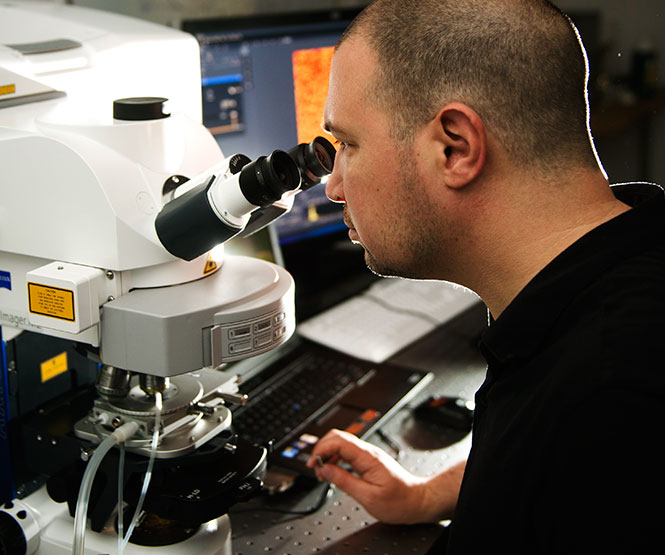Chemical Photonics
The Chemical Photonics group is small but highly successful in attracting research funding resulting in high impact publications (Nature Chem., Nature Nano., Nature Comm., JACS, Nano Lett., etc.). Our vision is to build on our success by expanding around our core areas of strength: spectroscopy, (chiral) plasmonics, biophysics, and soft condensed-matter studied using state-of-the-art laser techniques, microscopy, and computer simulations. Chemical Photonics has strong links with the College of Medical, Veterinary and Life Sciences, Engineering, and Physics, including the Sensors initiative and Quantic, Strathclyde, many international links (Europe, Japan, USA), and make extensive use of the nanofabrication facilities of the James Watt Nanofabrication Centre (JWNC).
The impact of Chemical Photonics is concentrated on the engineering and physical sciences/life sciences interface (“Technology Touching Life”). Our aim is to use the Biomolecular spectroscopy & dynamics Cluster, which was set up jointly with researchers at Strathclyde, as a means to accelerate impact. We have an on-going collaboration with Roche to develop chiral-plasmonics based sensors whose unprecedented sensitivity to biological structure allows for novel applications in pathology and disease diagnosis. Chemical Photonics develops software (contributions to ChemShell curated by STFC Daresbury Laboratory and licensed to Accelrys), and exploits infrared spectroscopy and advanced data analysis to fight malaria in developing countries such as Tanzania and Burkina Faso.
For more information on the Chemical Photonics group contact the head of section Prof Malcolm Kadodwala.


